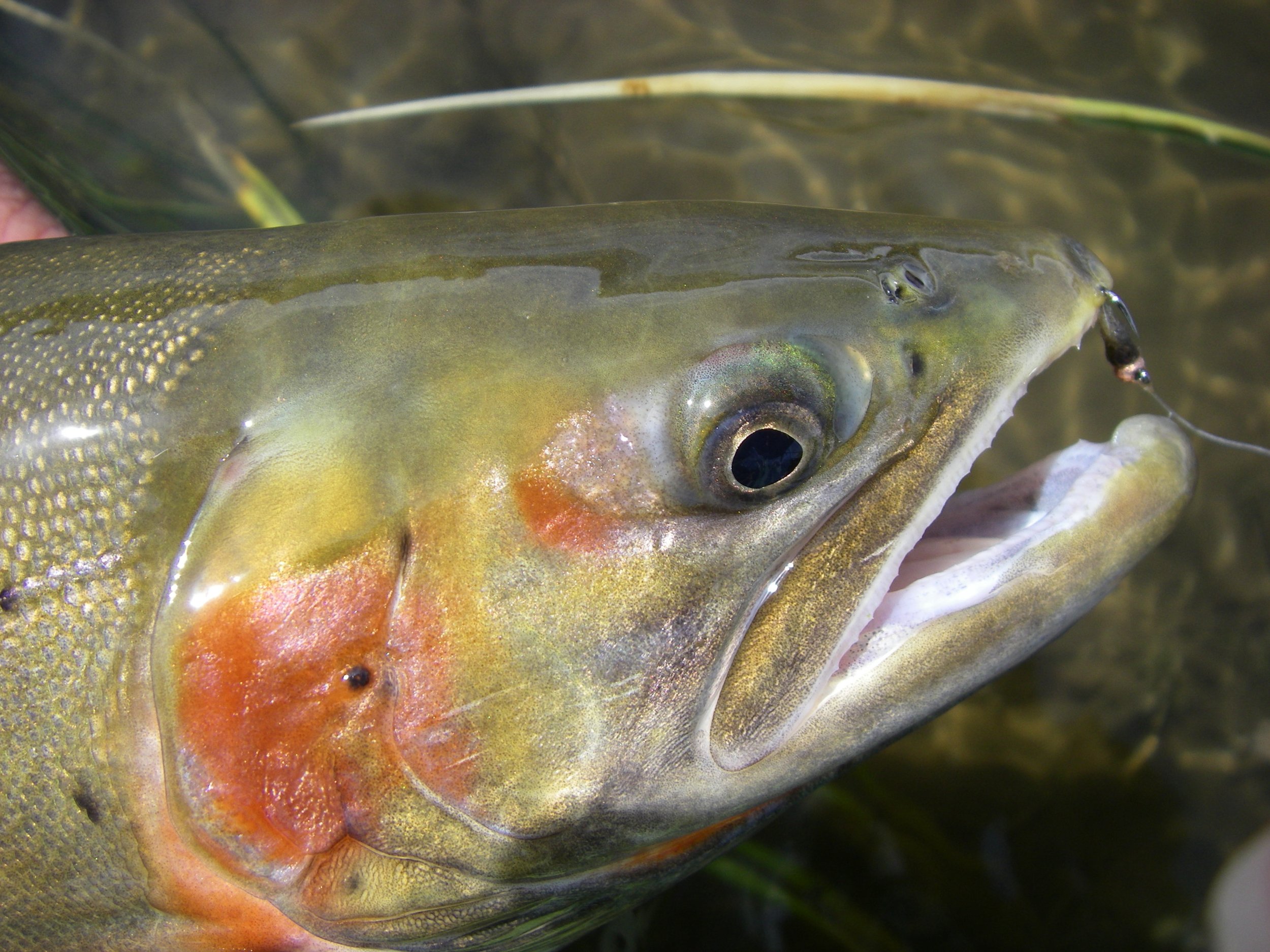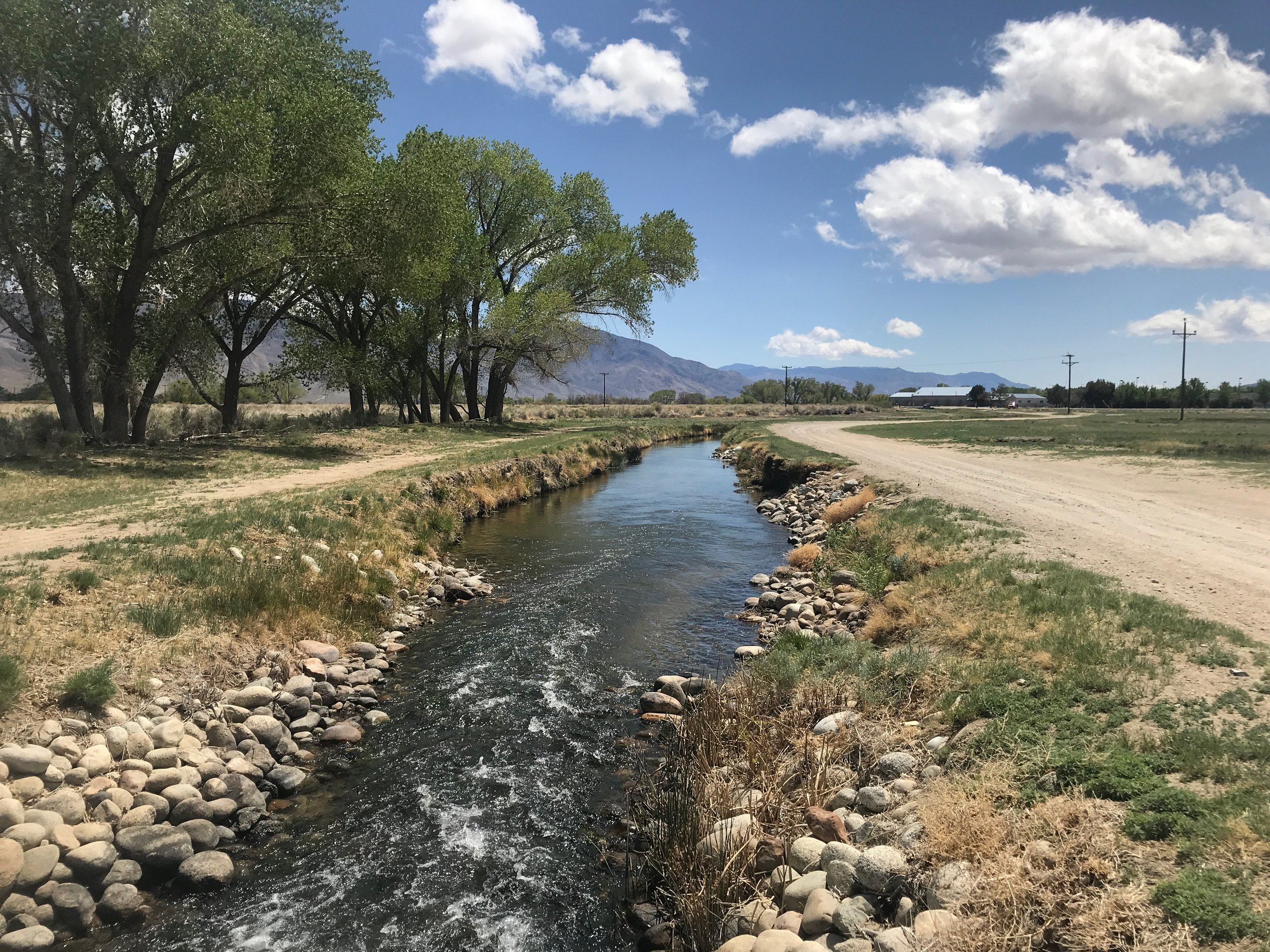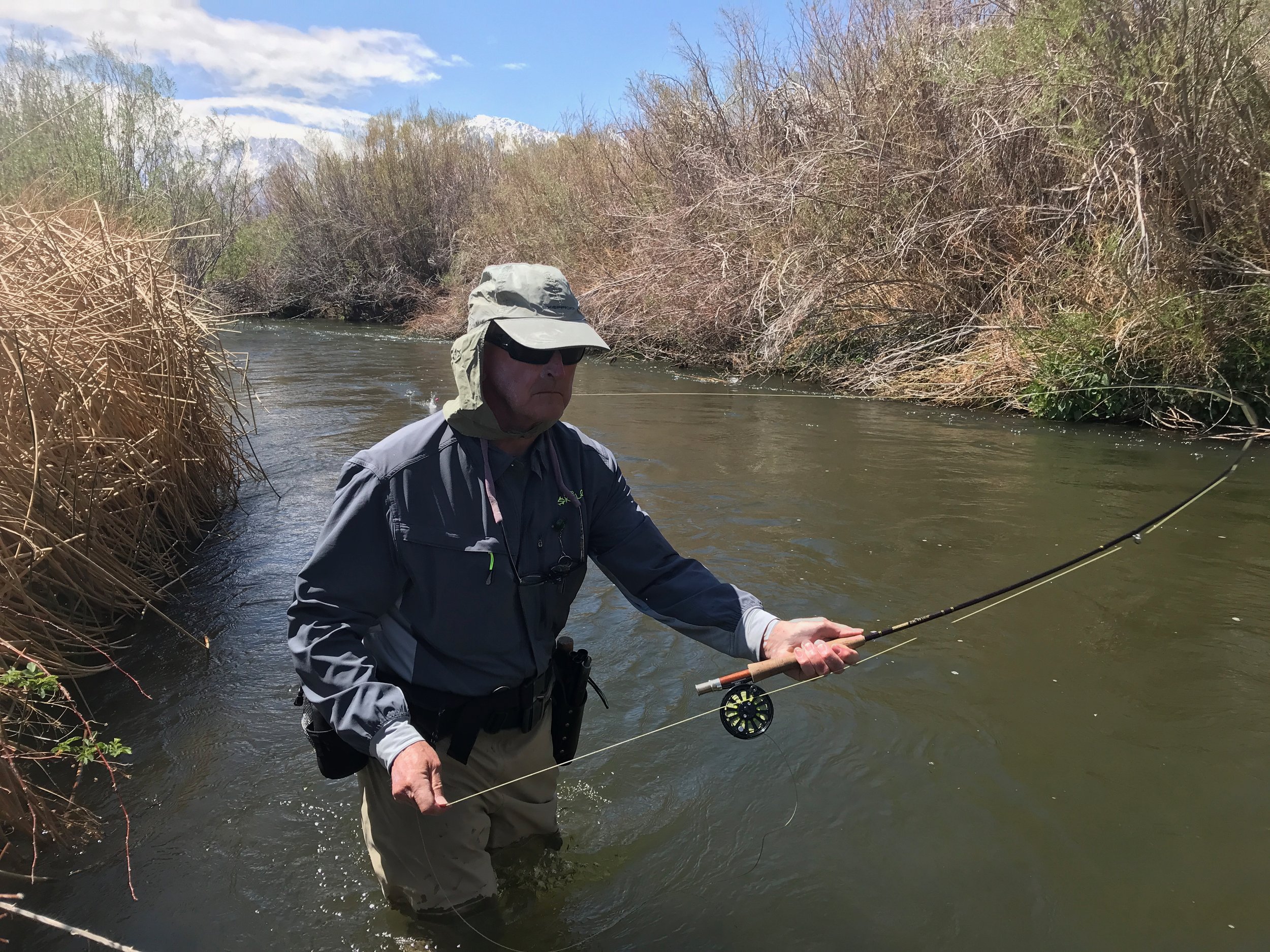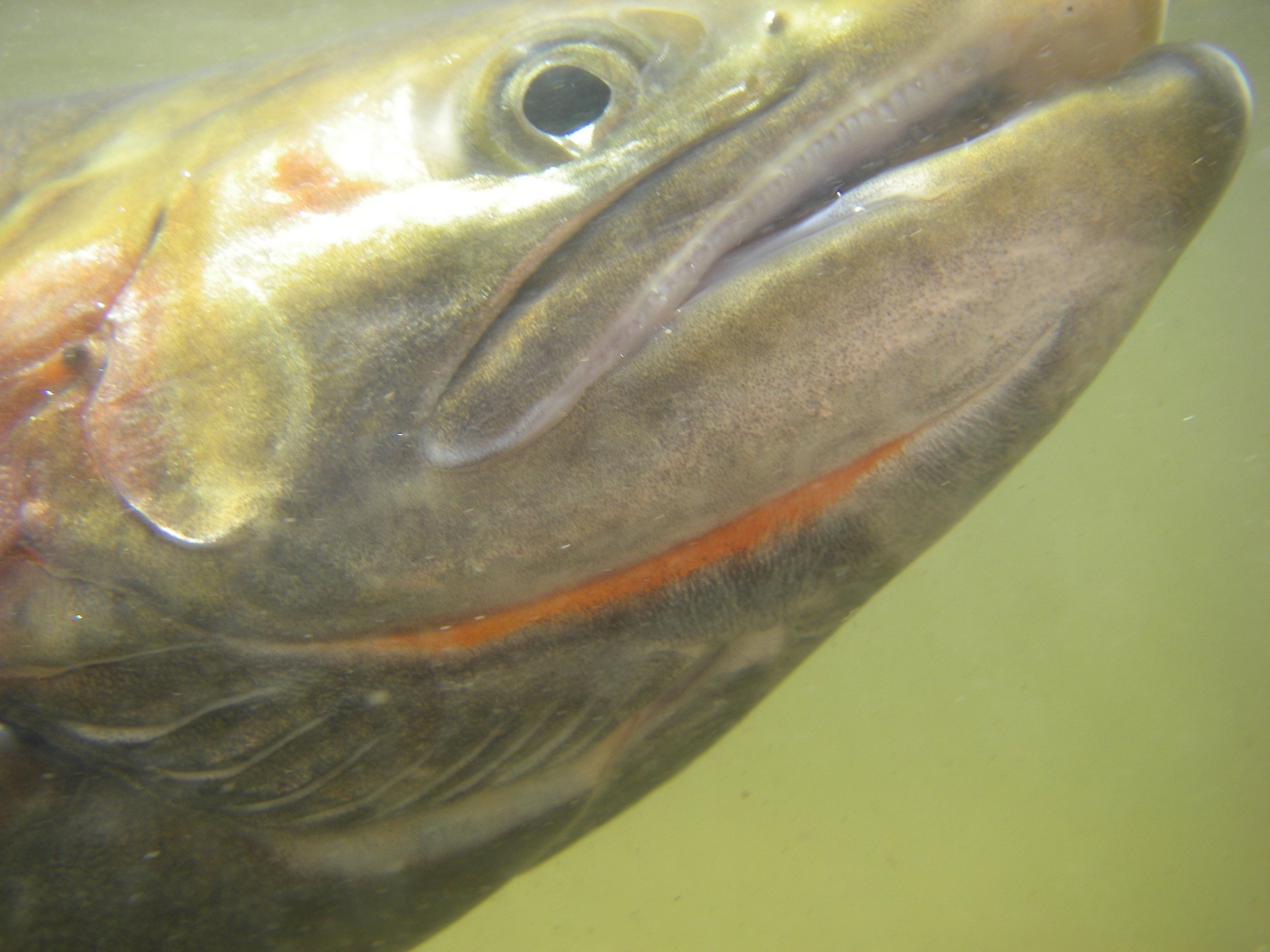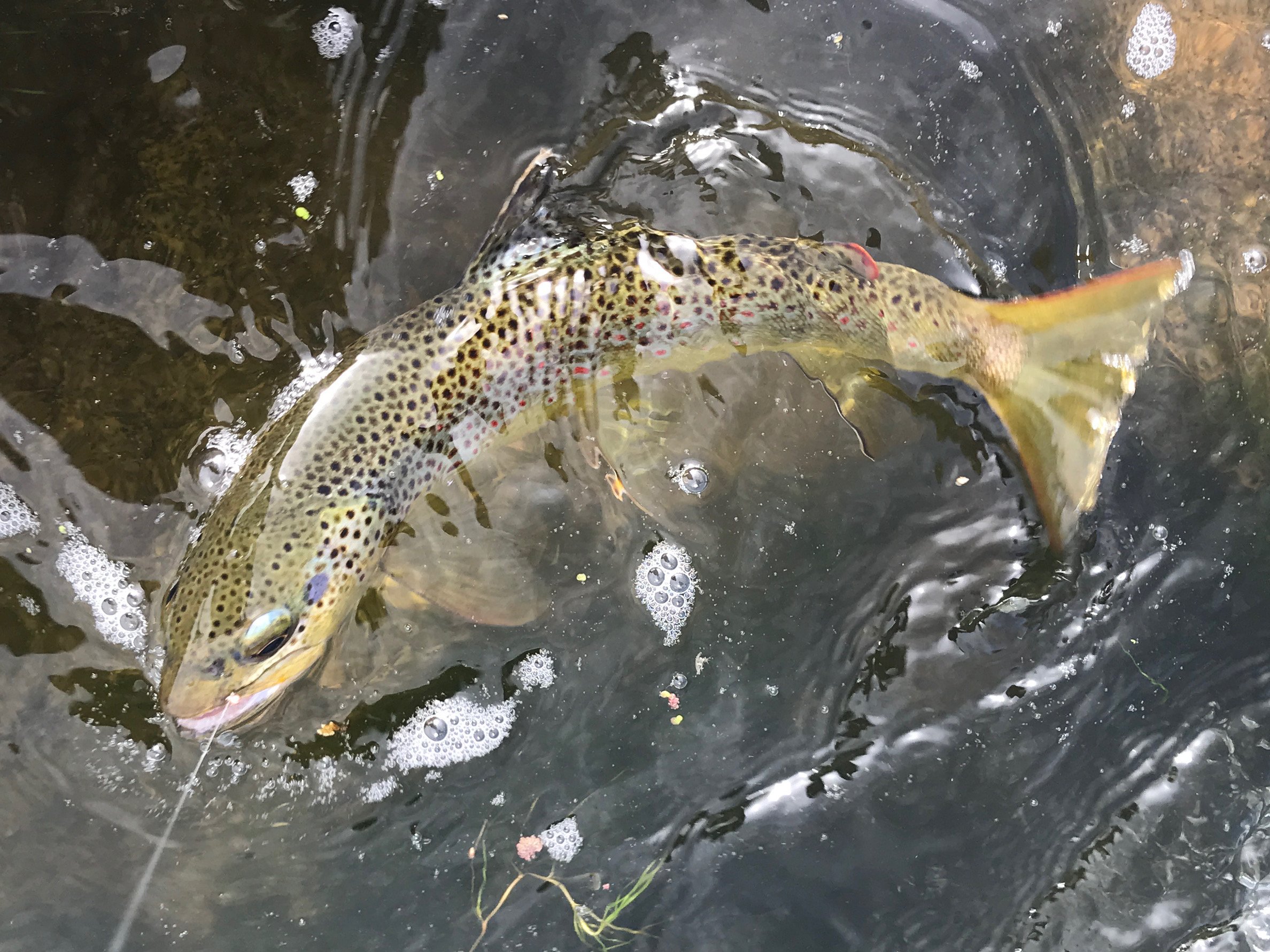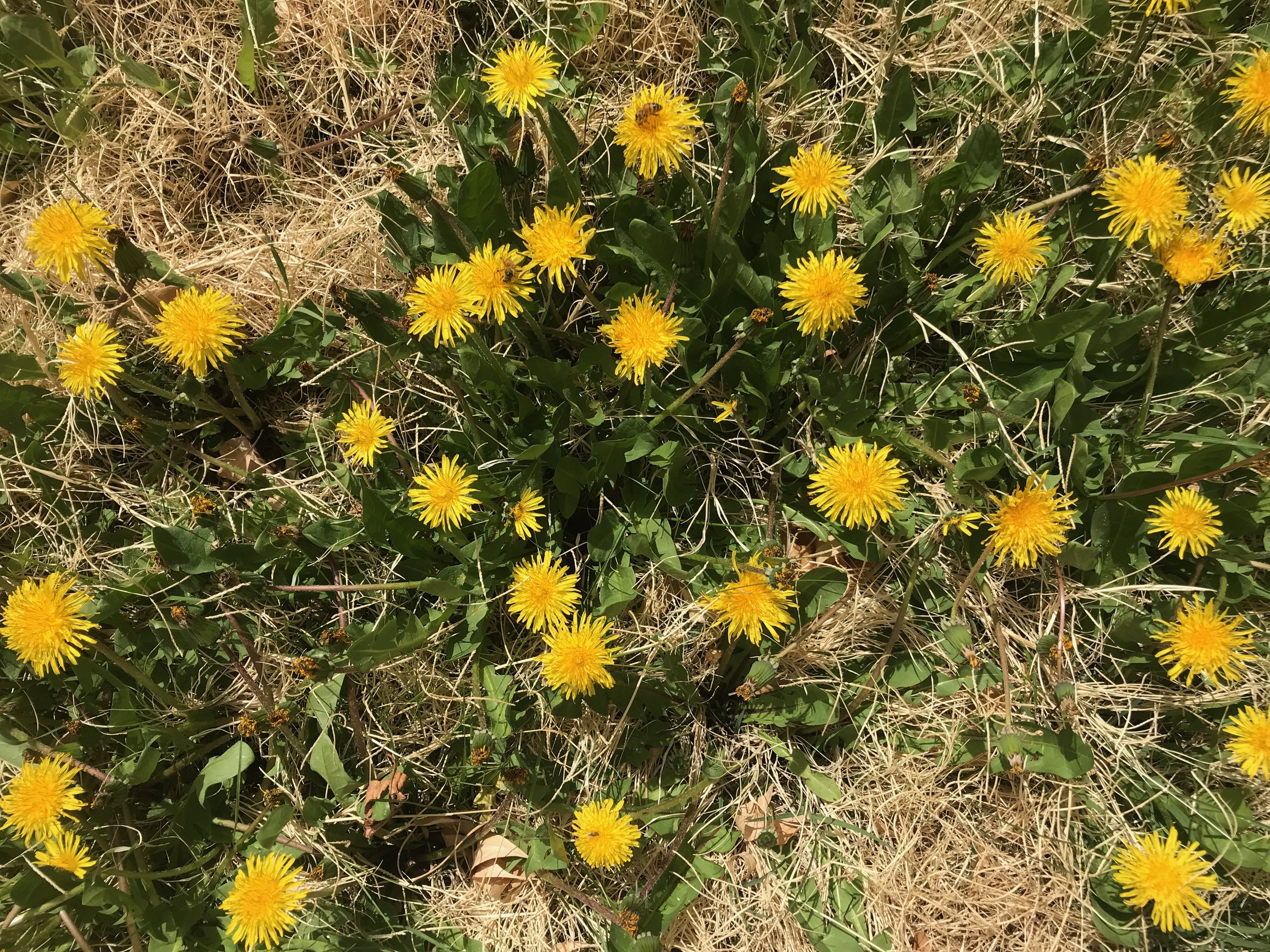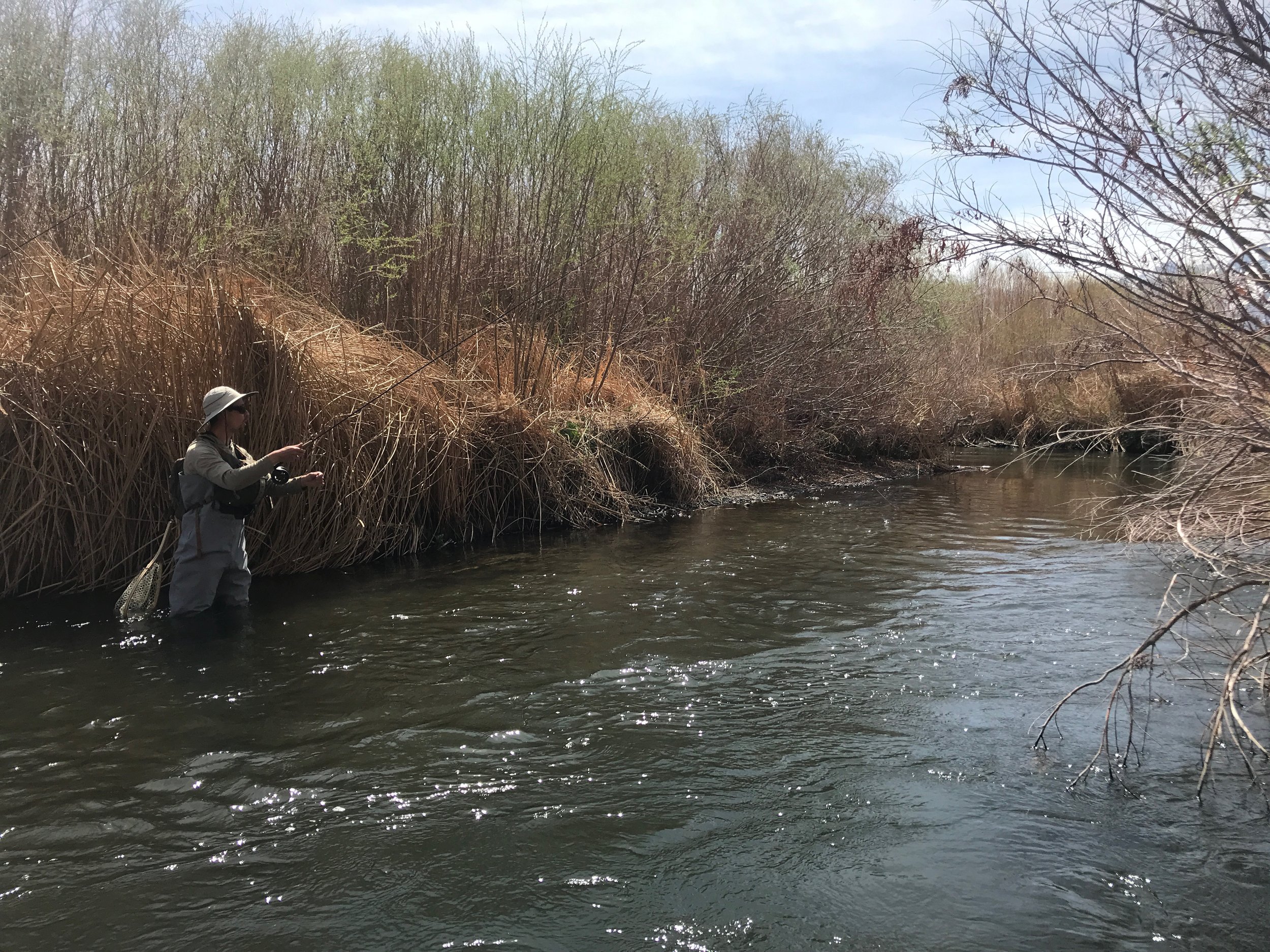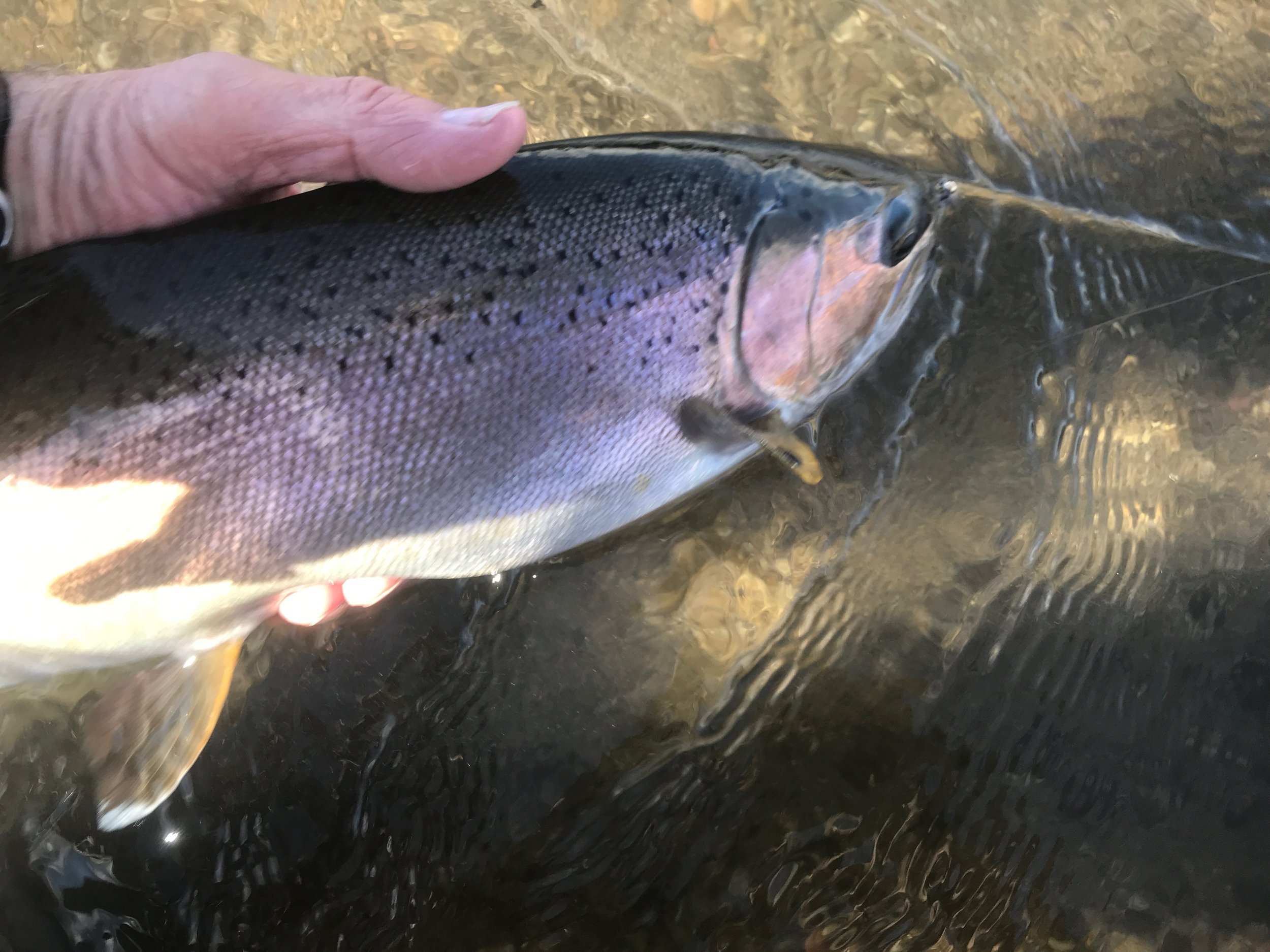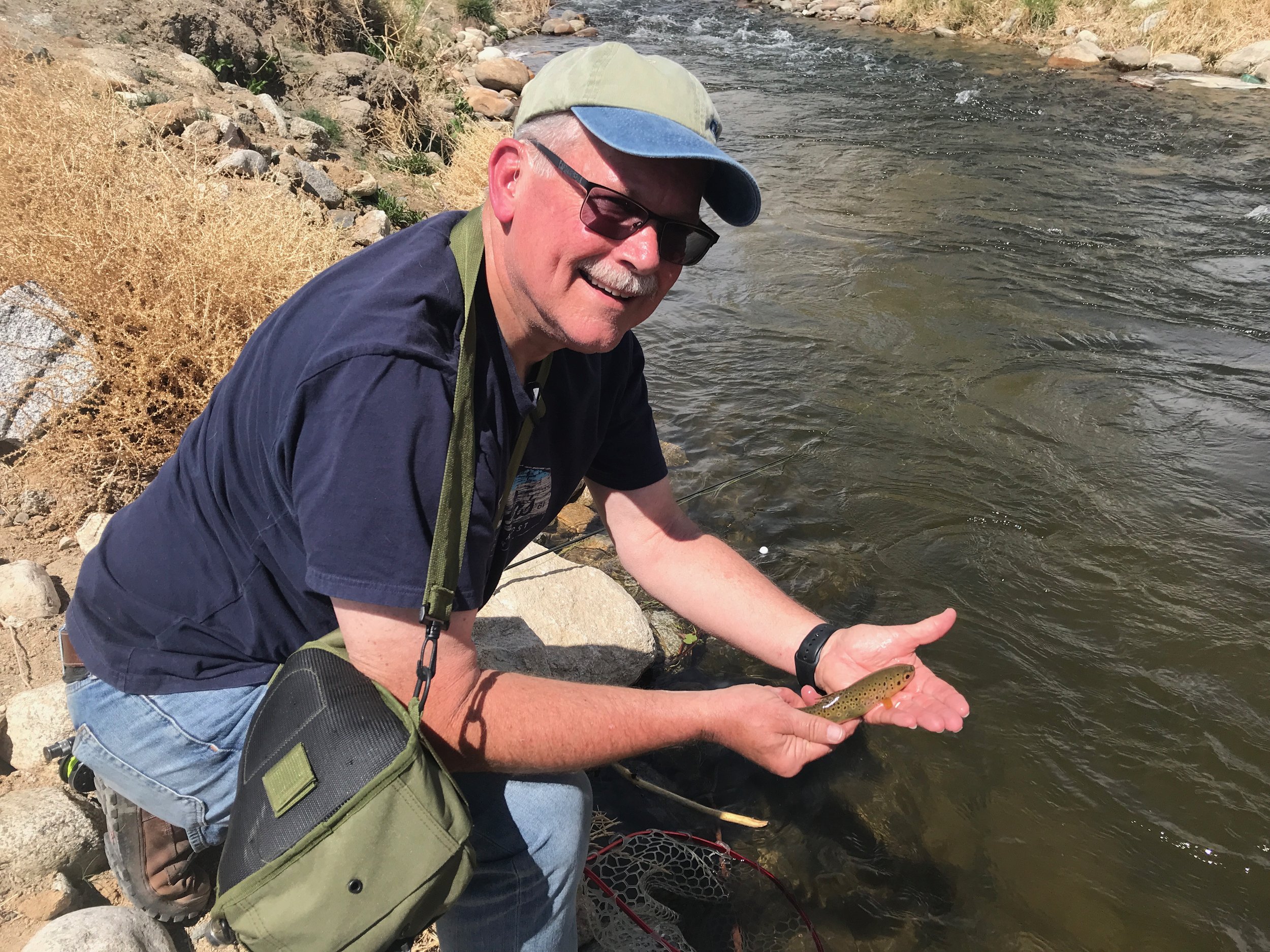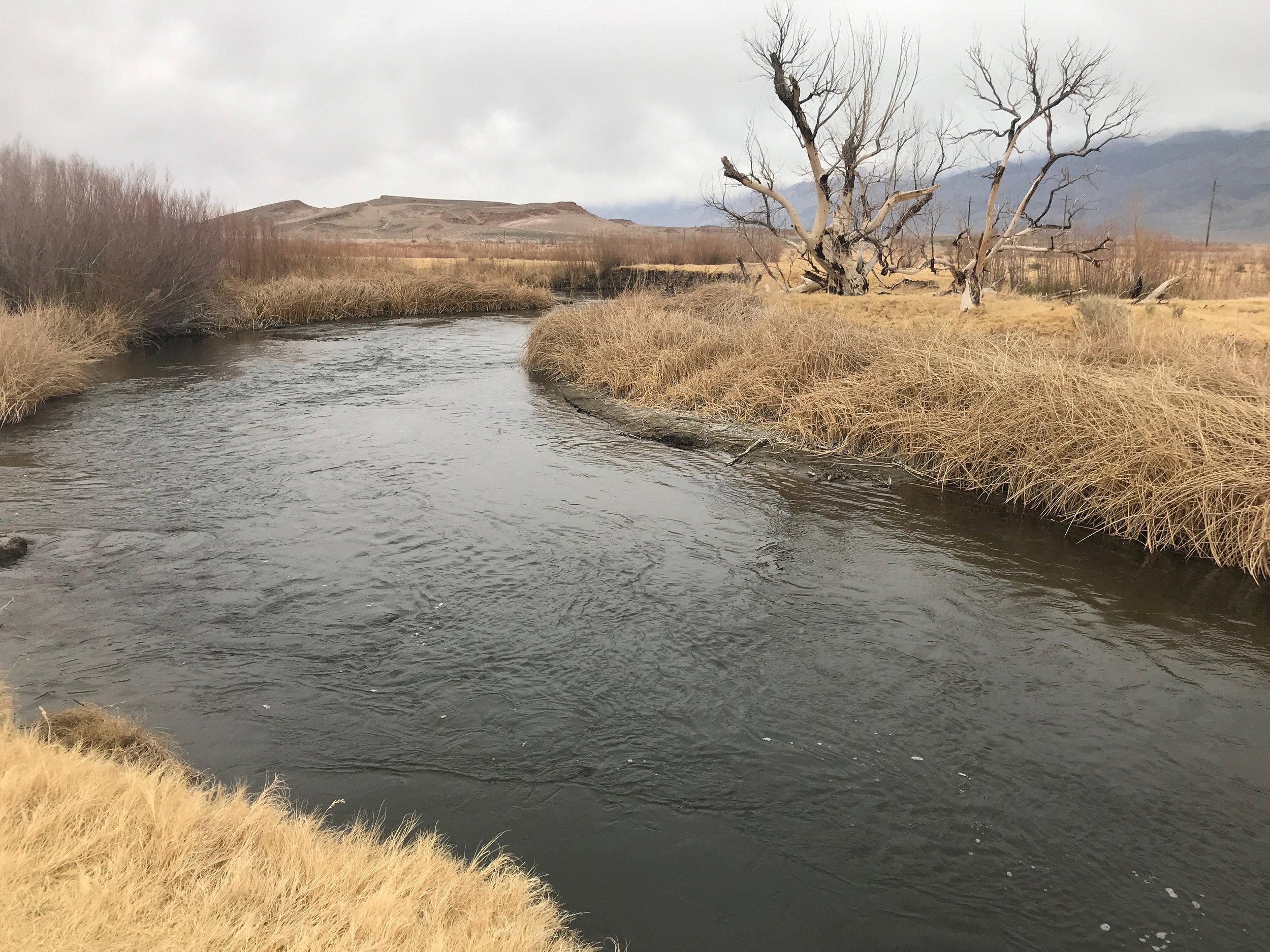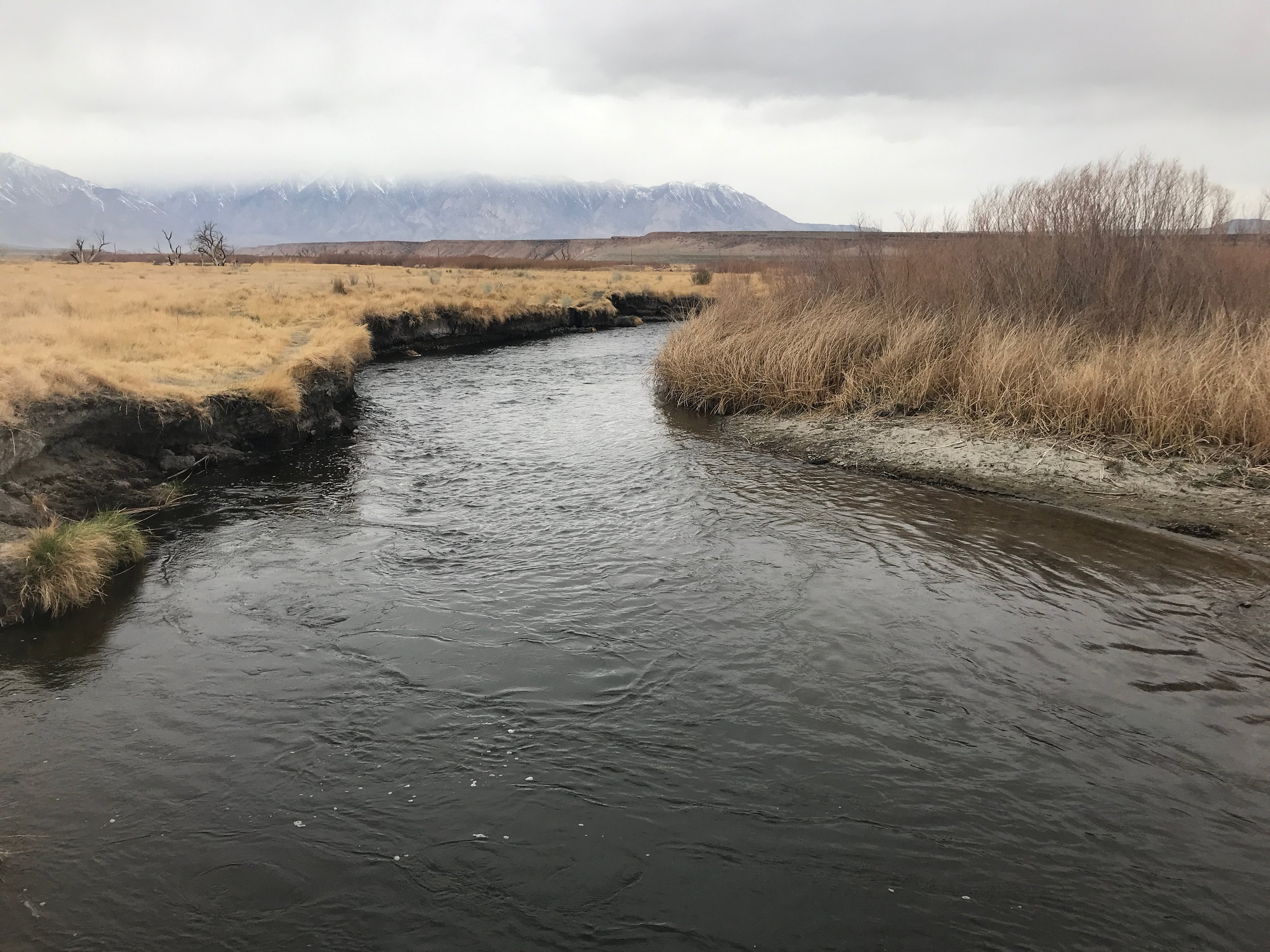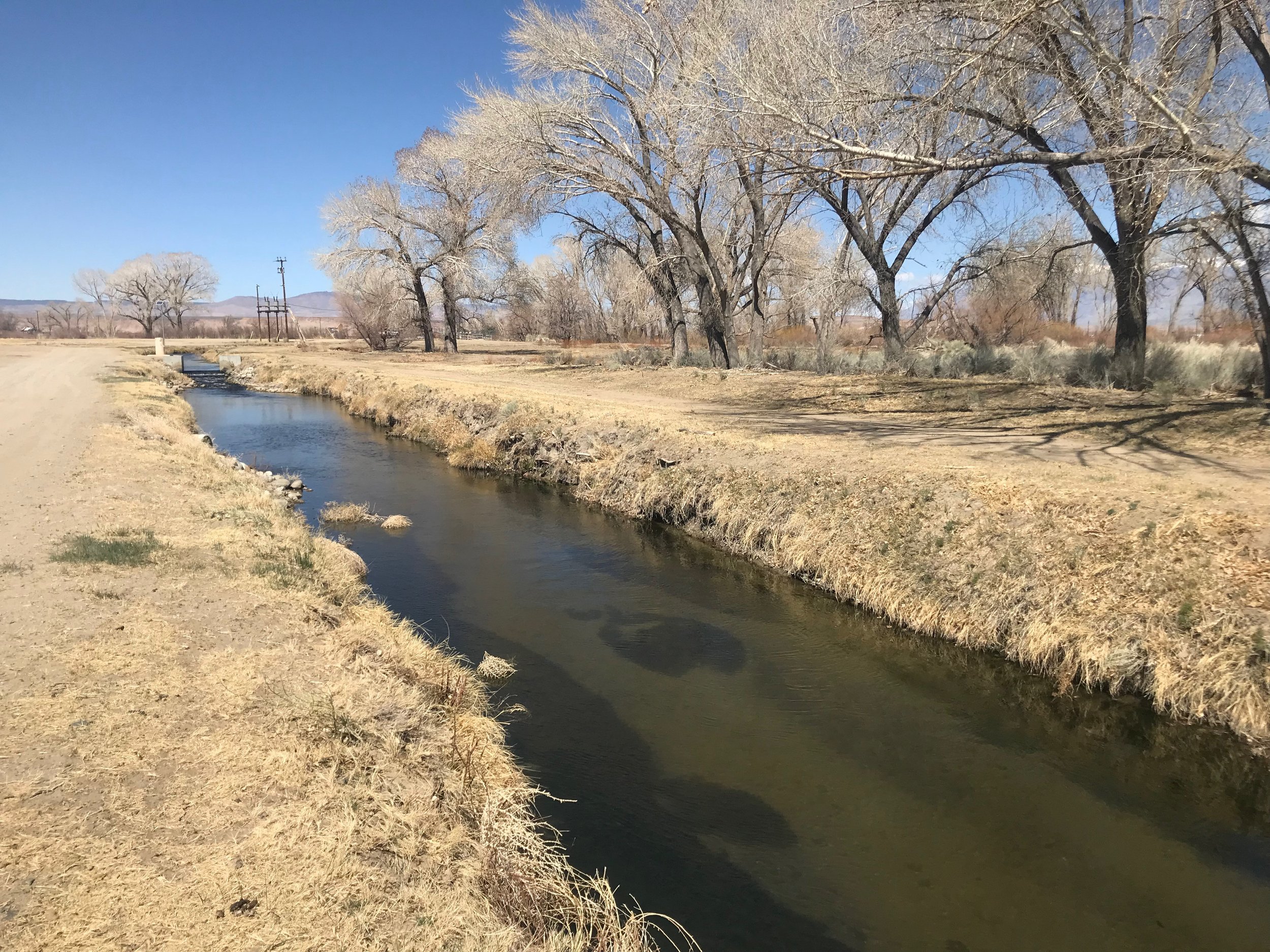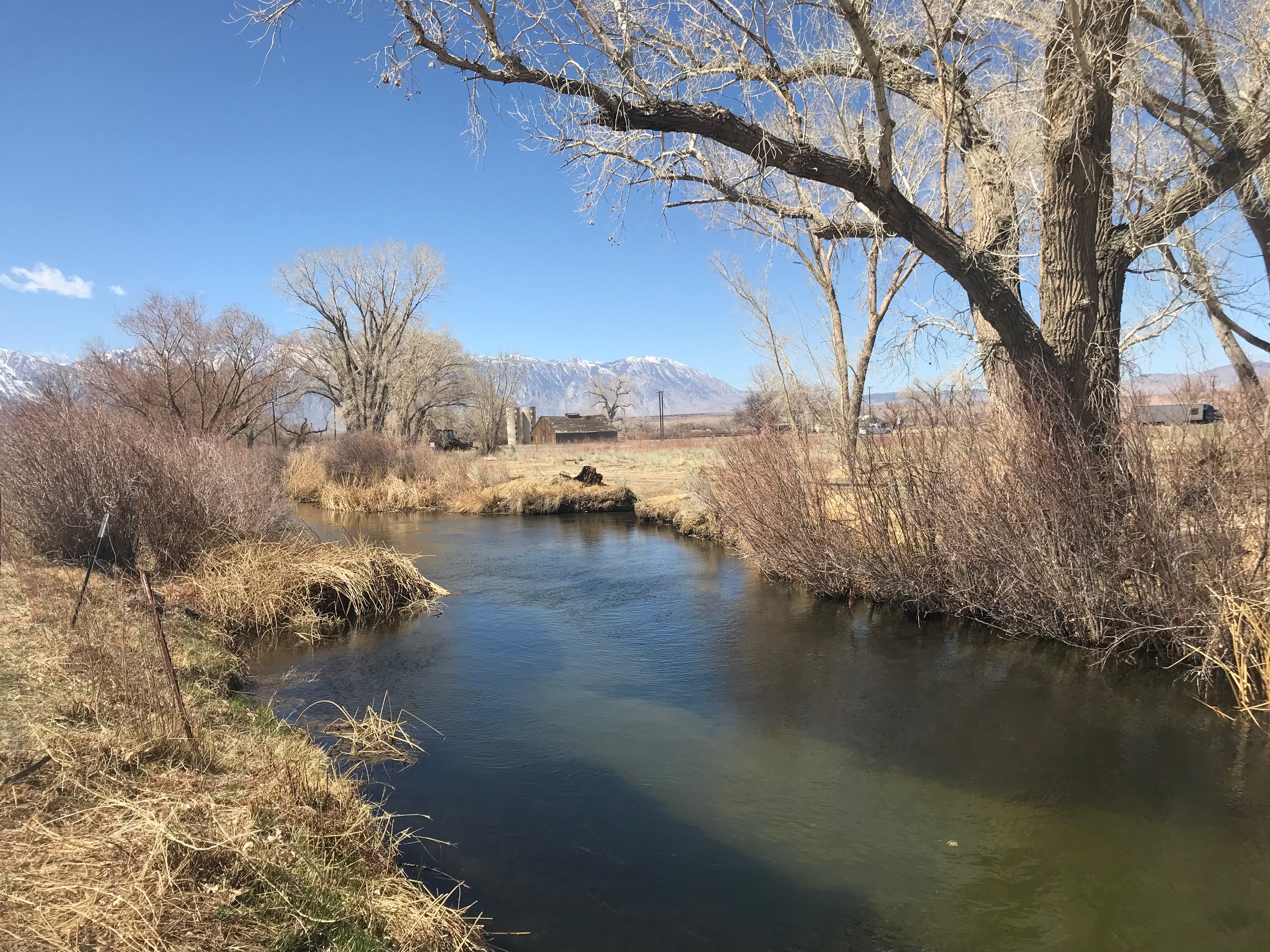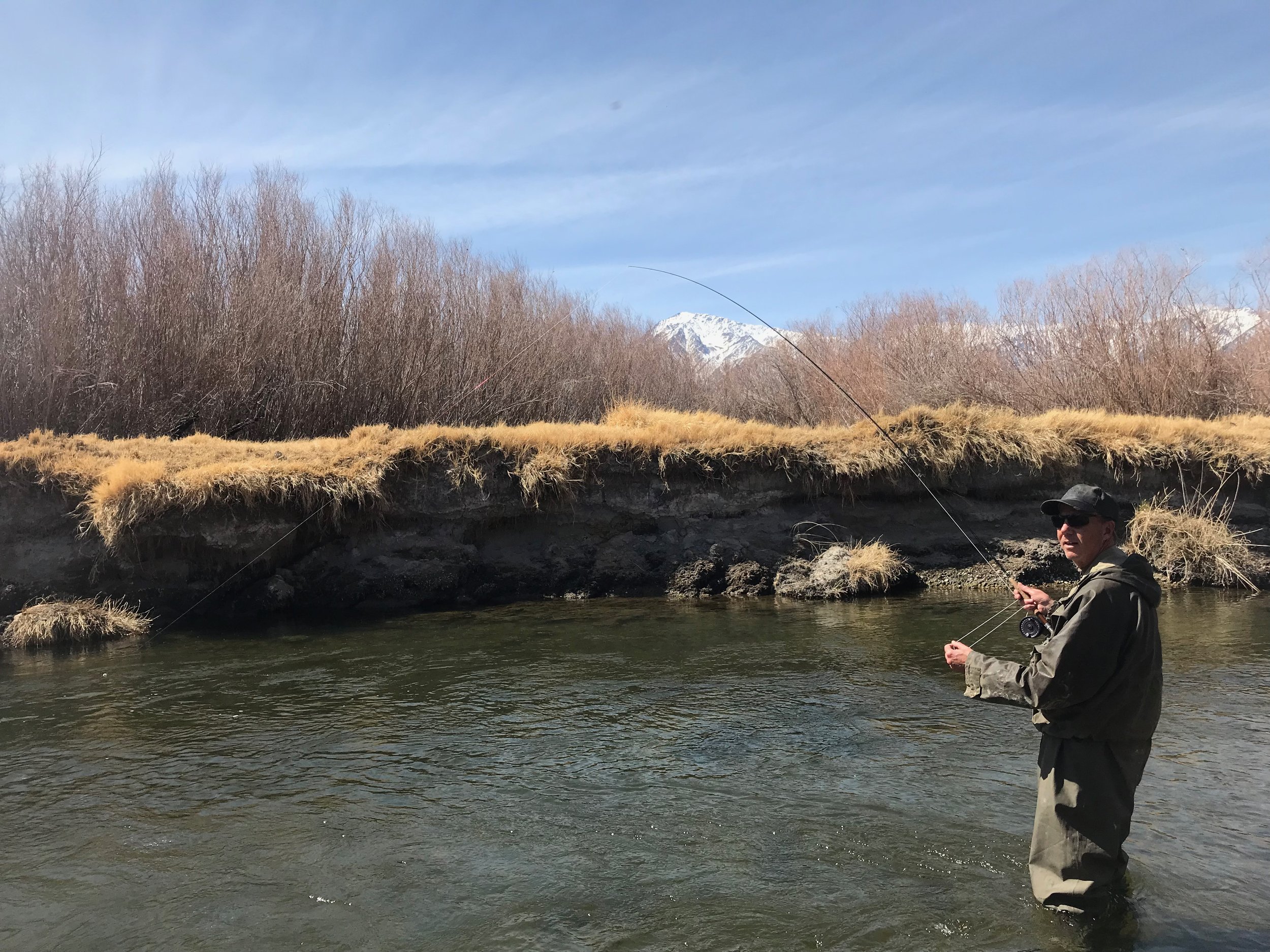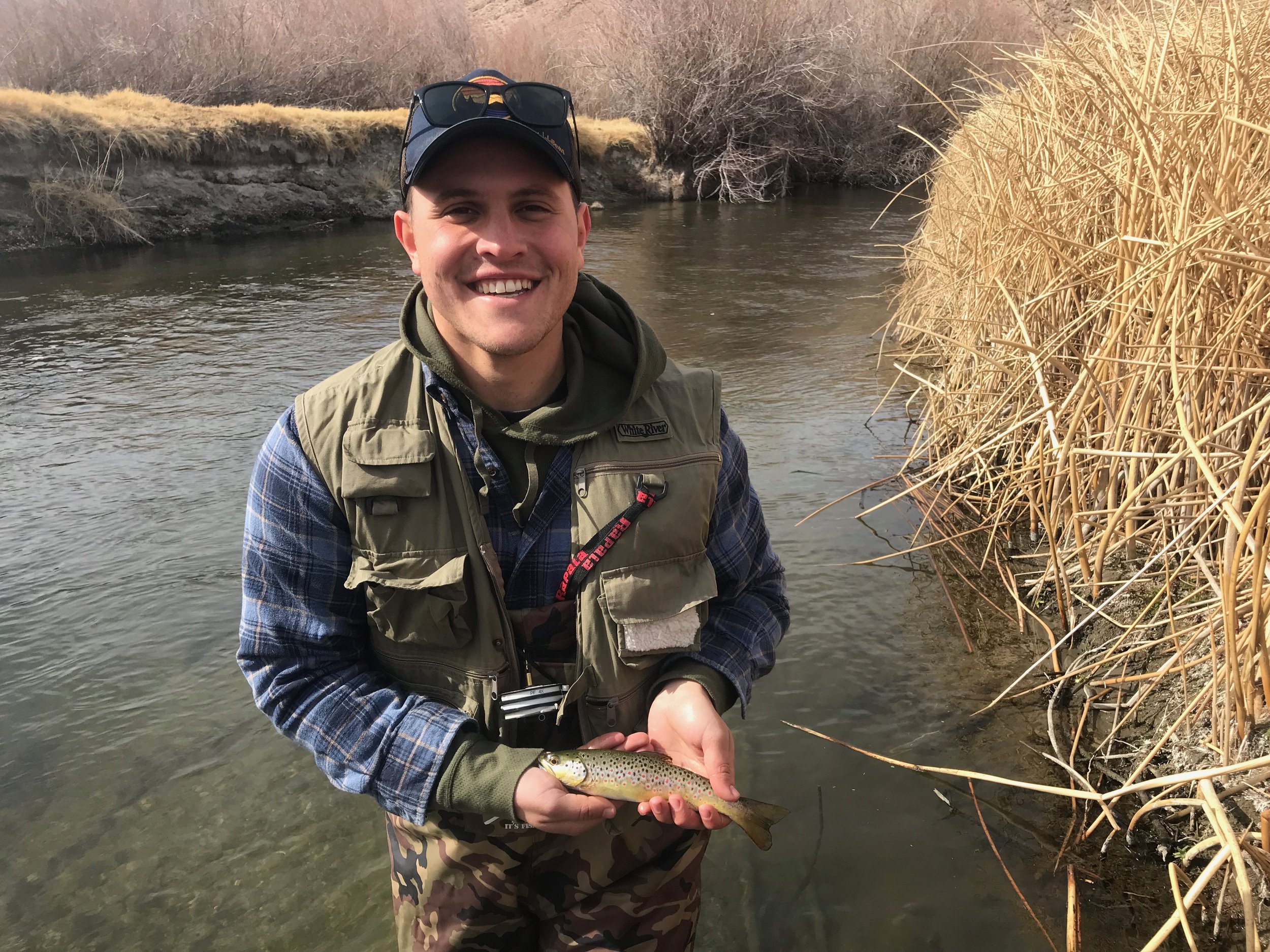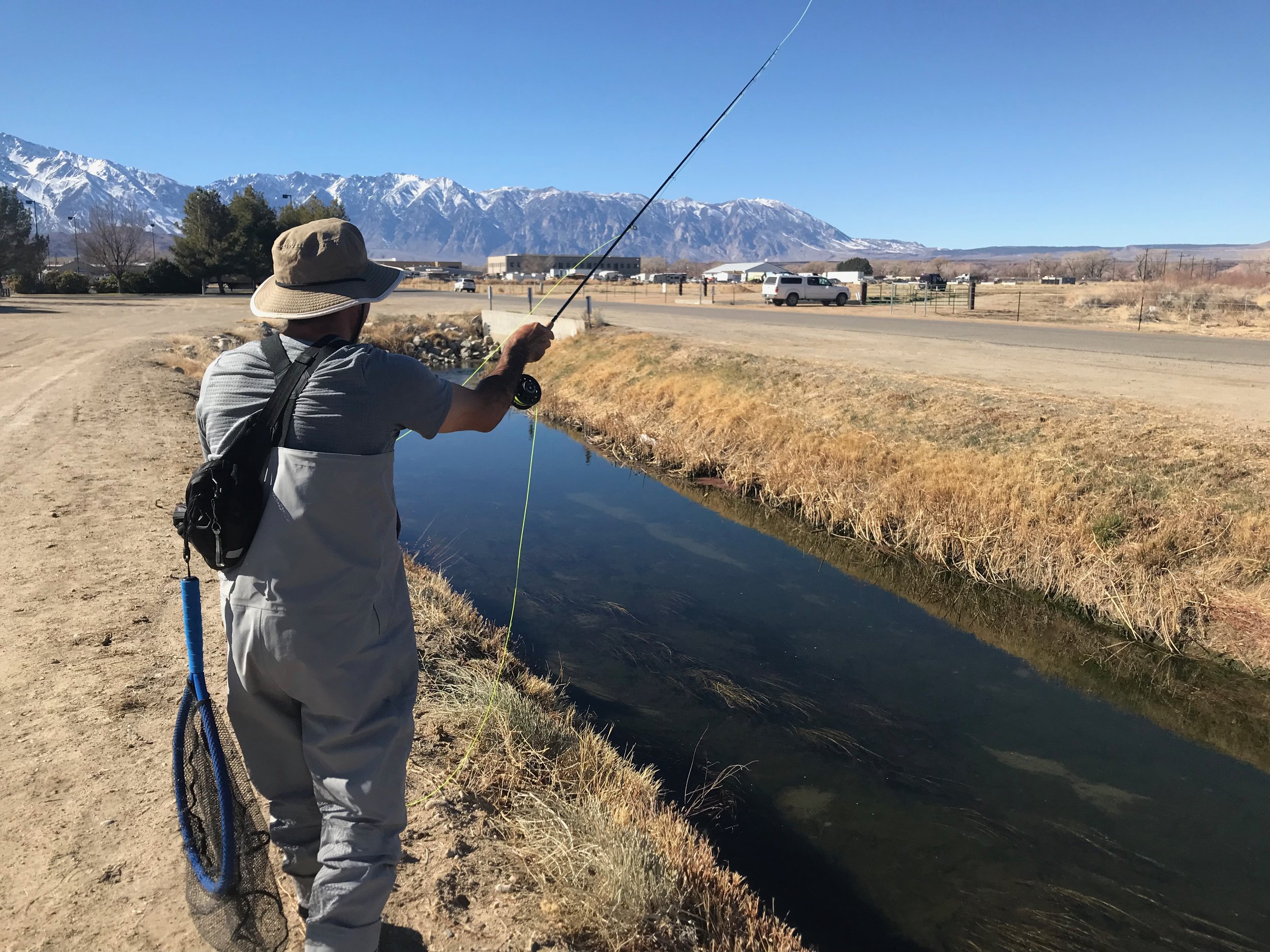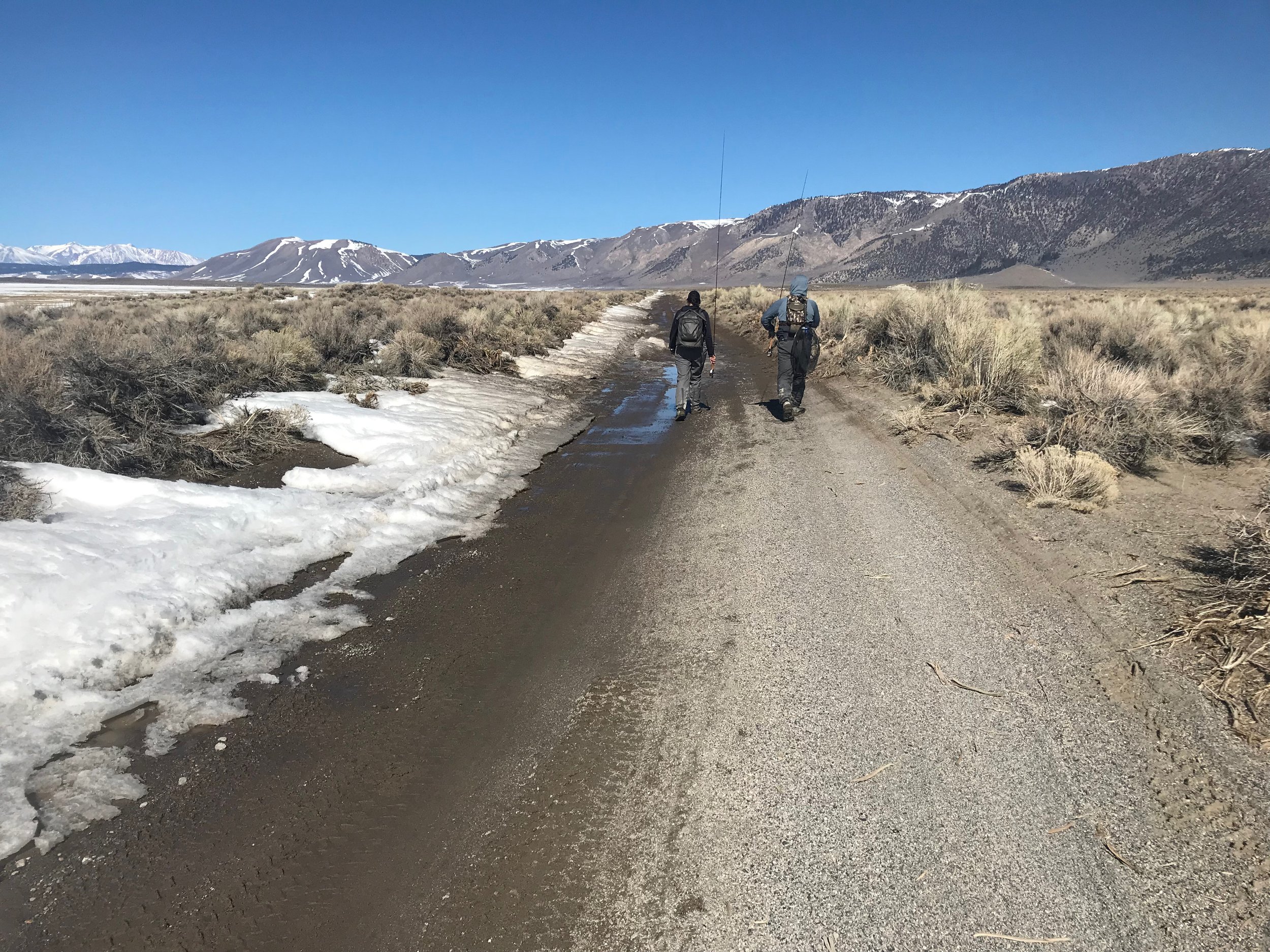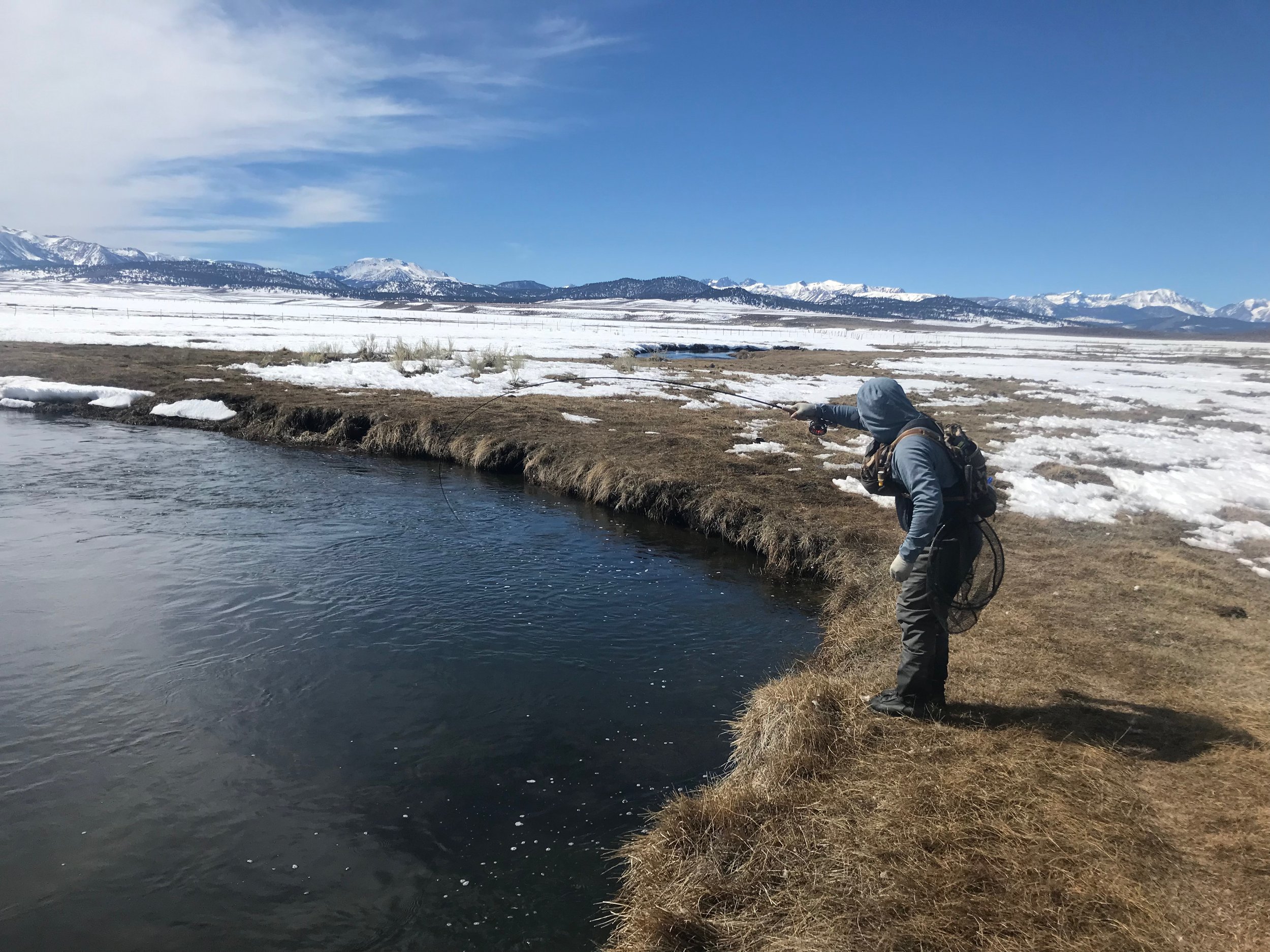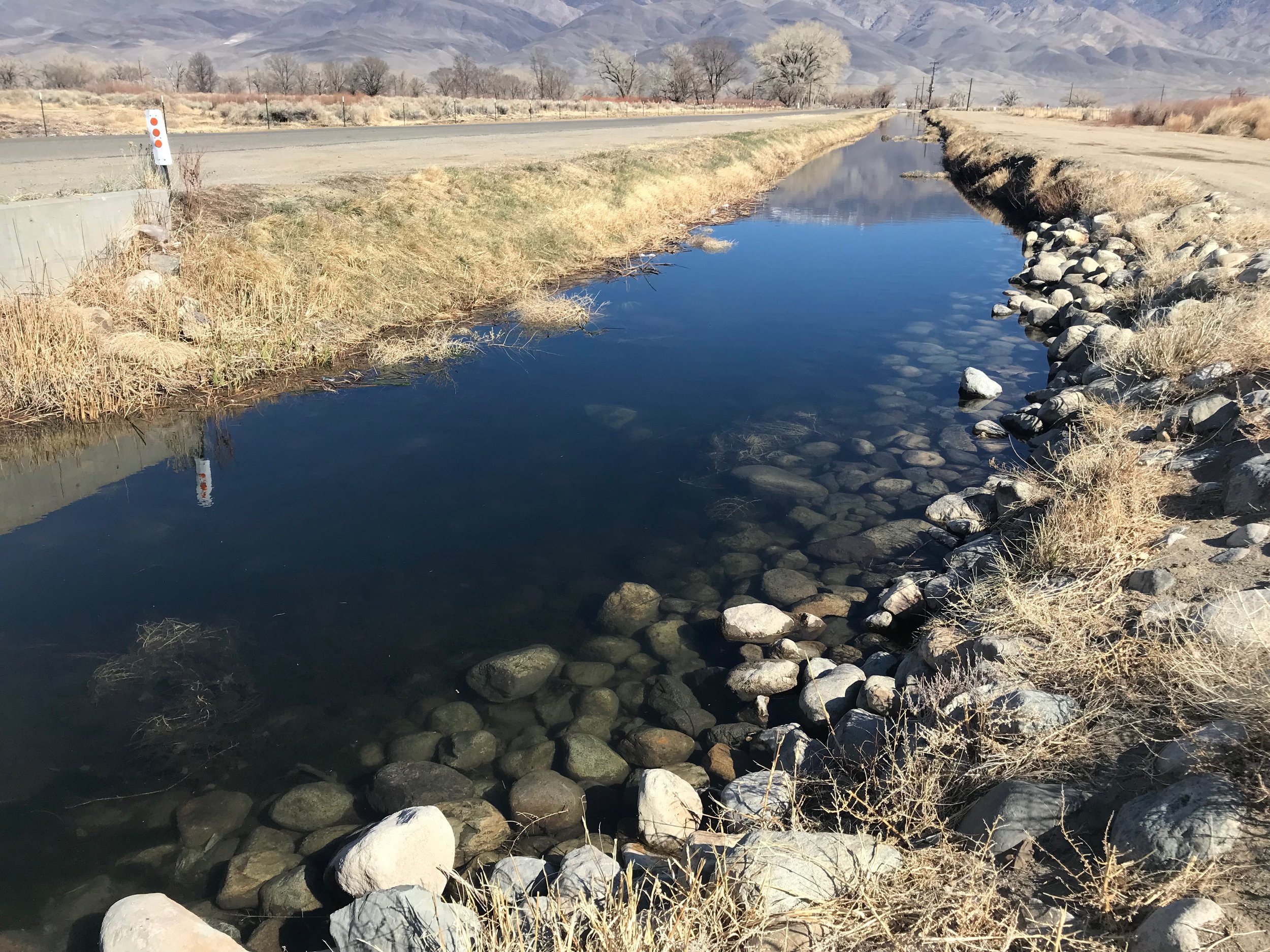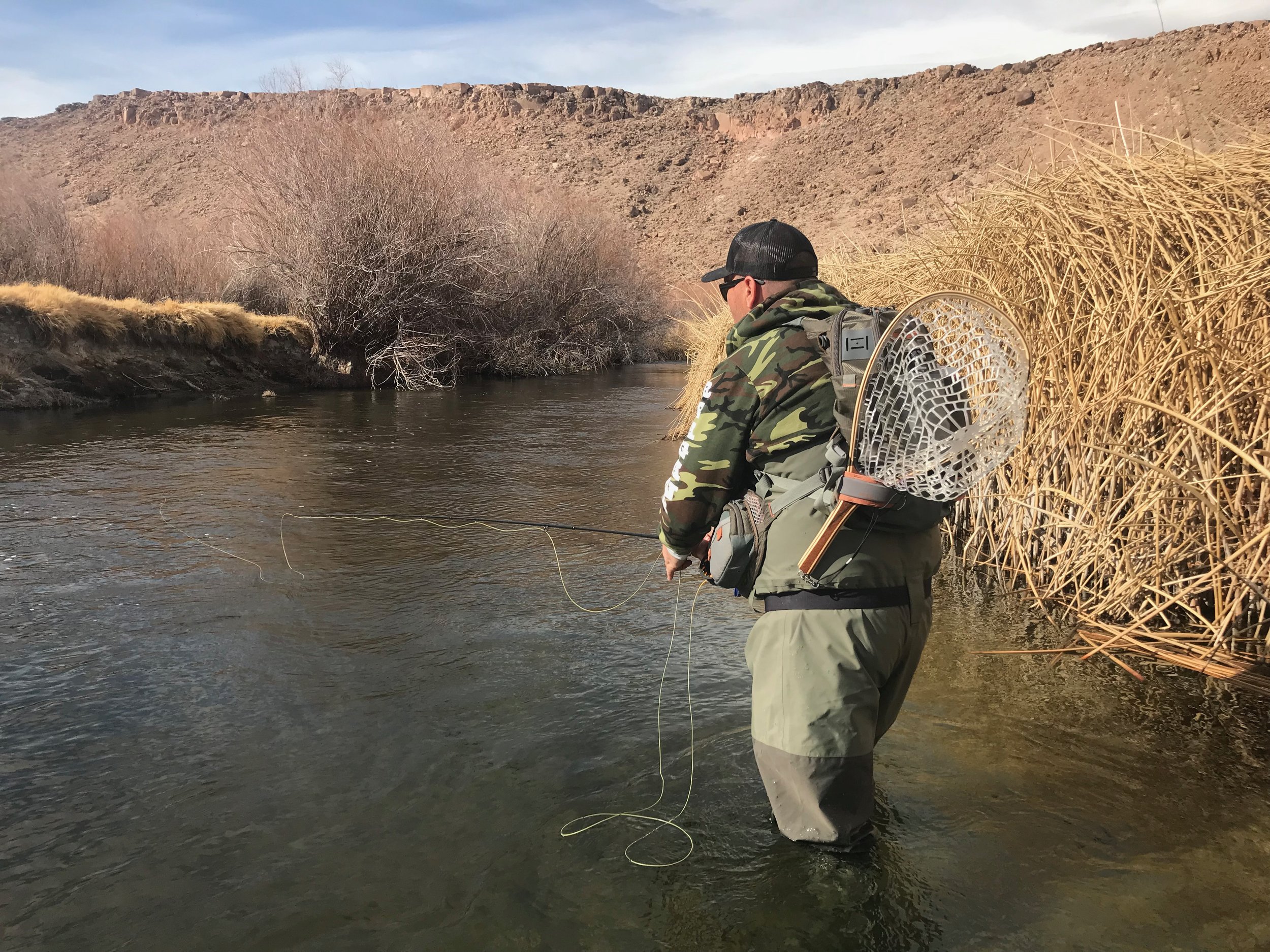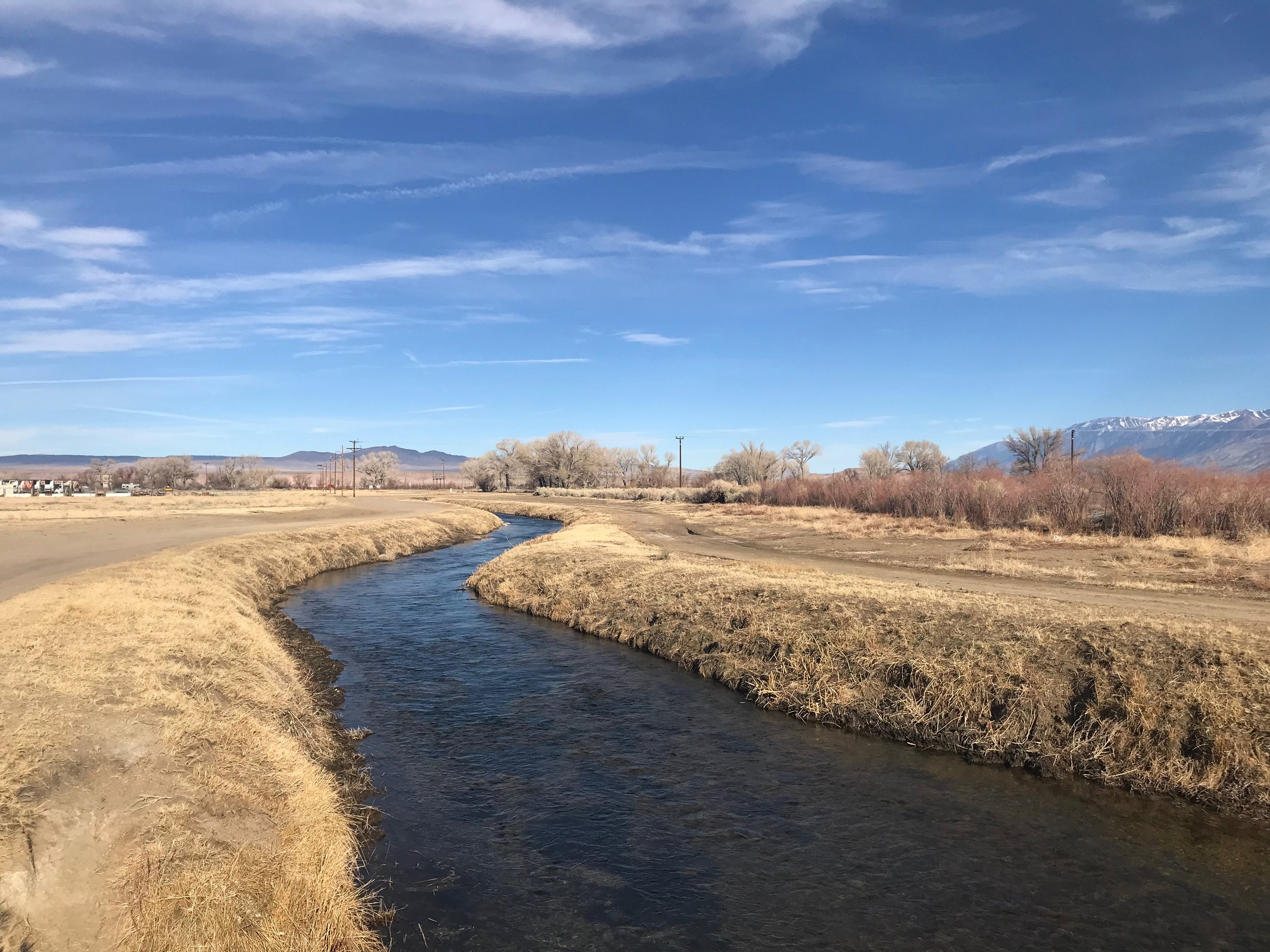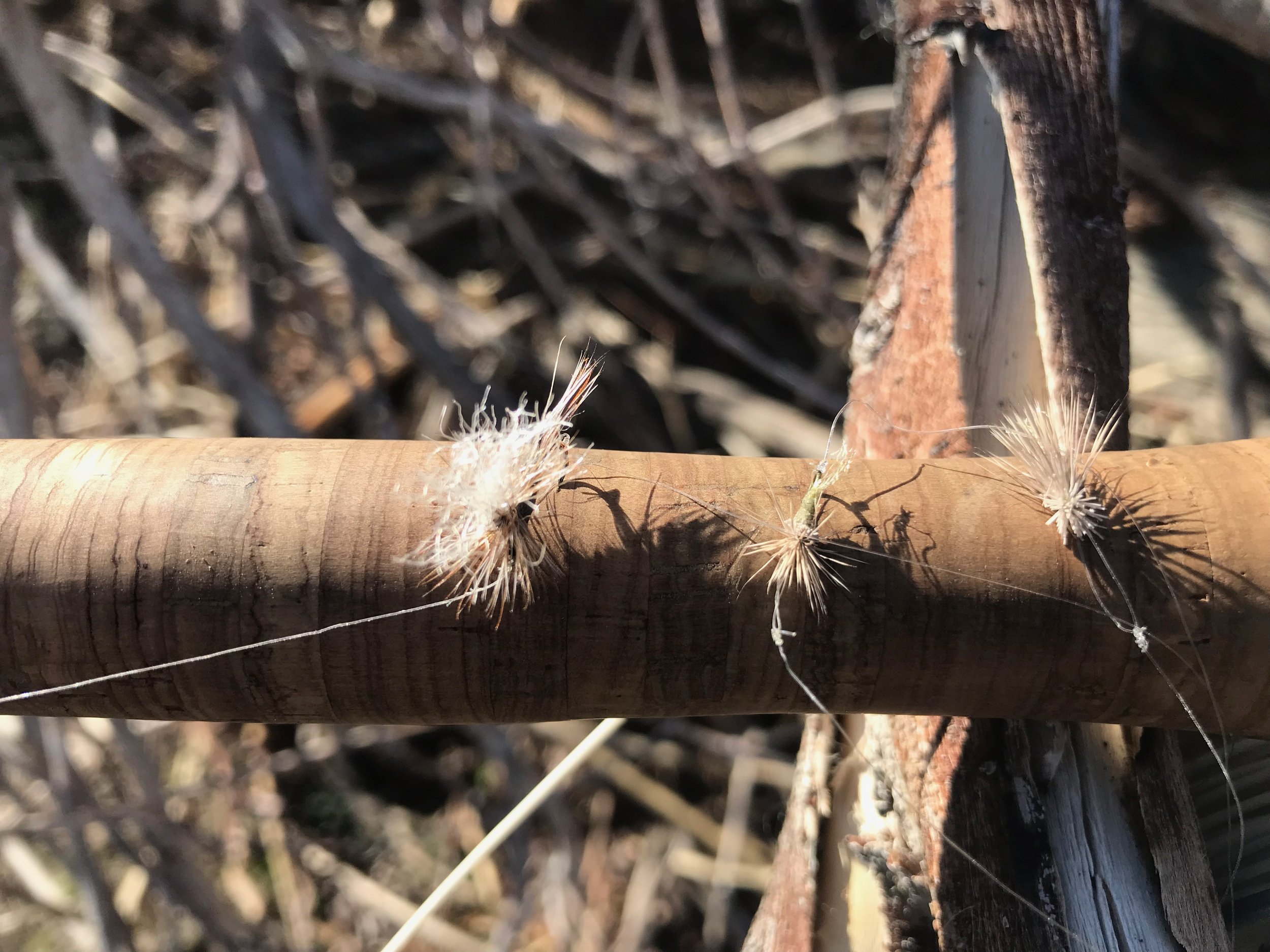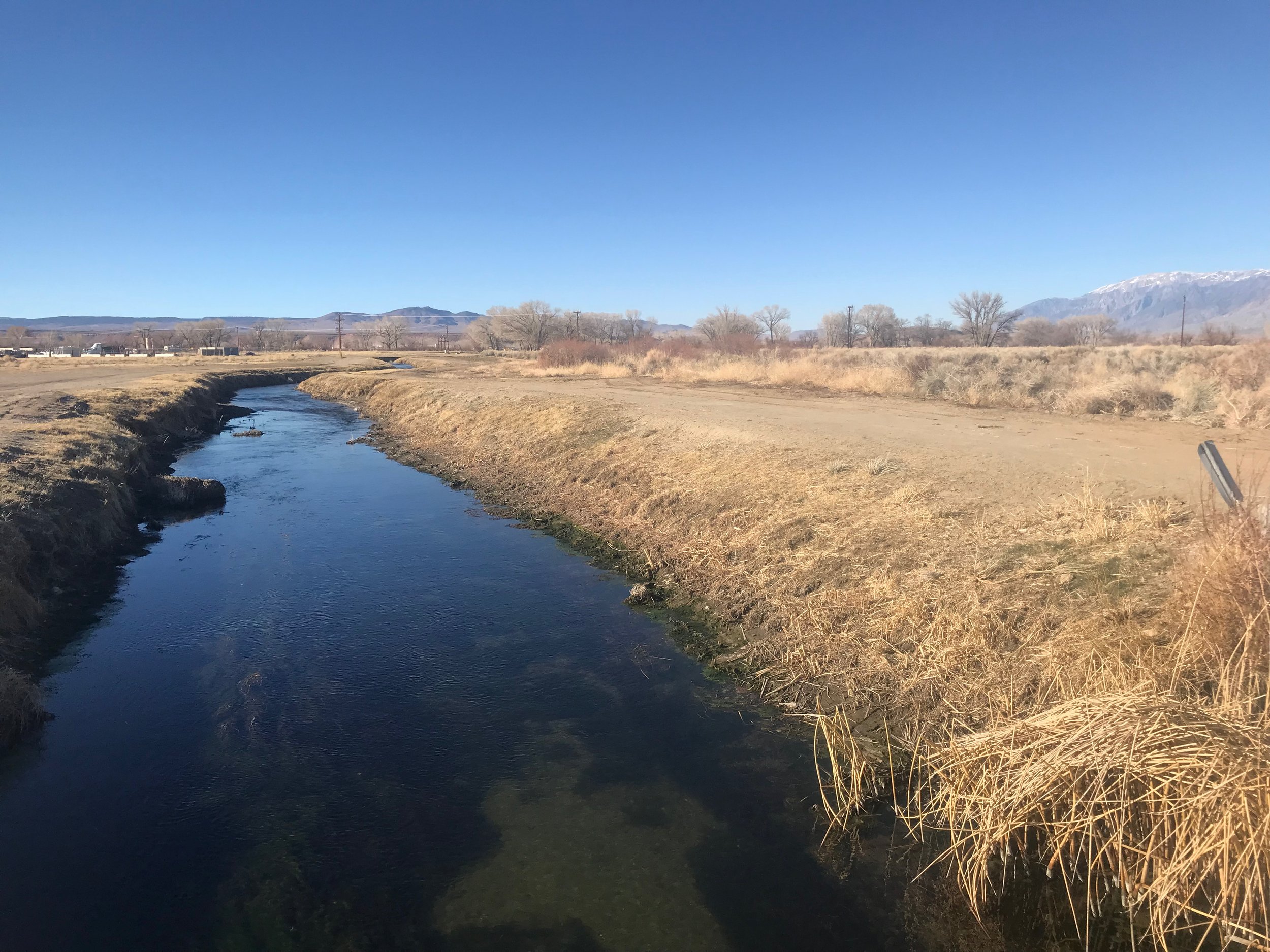Opening day for the Eastern Sierra is Saturday April 30, 2022. While the majority of Eastern Sierra waters have been open to catch and release fishing or catch and keep there are a few prime fly fishing waters that will be opening on April 30. Crowley Lake and the East Walker are two major fly fishing waters that will be opening up to fishing. With the opening of all waters this will take the pressure of some of the waters that fly fishers have been fishing this winter like the lower and upper Owens River. Lakes up to 7,500 feet are iced out. Lakes in 8,000 to 9,000 foot range are just starting to ice out. Ice out is a great time to fly fish these lakes. Be prepared for spring storms as they are always possible even in low snow years like this year.
One way to get out of the wind is to fish in the river bed and allow the tulles and willows to block the wind.
Lower Owens River:
Wild Trout Section:
Flows have stabilized around 150 CFS. This is a great flow to fish in the wild trout section. This increase in flows provides more habitat for the fish to live in. It allows the fish to live in deeper holes and runs which provides safety from predators like osprey. The blue wing olive hatch has slowed down and the insects hatching are a size 20. The trout are still actively feeding on the nymphs. There are pale morning duns hatching and the trout are feeding on the nymphs. I like to use a size 16 gold ribbed hare’s ear to imitate the pale morning dun nymphs. I like to use a size 16 split wing pale morning dun or a brown quilldigon to imitate the emerging pale morning duns. Spring time in the Eastern Sierra seems to be filled with wind. Fishing in the river bed allows fly fishers to get out of the wind.
Owen Farkas from Thousand Oaks with his first trout on the fly rod landed in the catch and release section of the lower Owens River.
Hot Creek:
Interpretive Site:
Spring winds are playing havoc with fly fishers trying to fish Hot Creek. I fish with the idea of manana. If the winds blowing, I stay home and do paper work or tie flies and go fly fishing on non-windy days. When the wind lays down there is good dry fly action for fly fishers. Blue wing olives are offering most of the action even though there are midges around. I like to fish size 20 blue wing olive parachutes or size 20 olive sparkle duns. The surface activity is over by 2:00 P.M.
Hot Creek:
Canyon Section:
With the steeper gradient in the canyon section it lends its self to nymph fishing. I like to fish with a dry and dropper set up. The reduced flows allow the dry fly to not spook trout like an indicator well. I fish with size 16 olive quilldigons, size 18 bead head flash back pheasant tail nymphs, tiger midges, zebra midges and soft hackle brassies. The water in the canyon is shallow and I’m fishing the nymphs on a two to three foot tippet of 5X fluorocarbon. Sometimes I’m as short as 18 inches between the dry fly and the dropper. Work the nymphs around the structure, weed beds and rocks, being ready to set the hook at the slightest movement in the dry fly.
It will be at least a couple of weeks before the cutthroats show up in the upper Owens River.
Upper Owens River:
Above Benton Crossing Bridge:
Spring storms are affecting fly fisher looking for trophy trout on the upper Owens River. When it’s not snowing and blowing working nymphs in the deep holes, runs and cutbanks are producing a few trophy trout. The cutthroats are not in the river yet. It will be two to three weeks before these fish show up. Remember that the Owens River is the only tributary to Crowley Lake that is open to fishing. The other tributaries will open up on the Saturday before Memorial Day.
Fishing the pool below a riffle is producing lots of wild brown trout for fly fishers fishing an indicator nymph rig.
Bishop Creek Canal:
Behind the Ford Dealer:
Flows are increasing in Bishop Creek canal and the wild brown trout are feeding on nymphs. I’m fishing clients under an indicator with a gold ribbed hare’s ear or bead head flash back pheasant tail nymph. Fishing the faster sections of the canal, water below a weir or culvert has been the most productive spots to be fly fishing. I’m using my standard nymph set up of the nymph on the bottom with a weight 12 to 18 inches above the fly and the indicator 1.5 to 2 times the average depth of water above the bottom fly. For the canal I’m using a size 1 weight and the indicator five to six feet above the fly.




